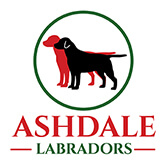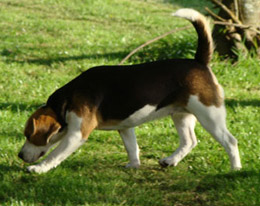The BeagleHistoryThe beagle was developed in England and is said to descend from the Talbot Hound brought there during the Norman Conquest [1066]. The first written reference to the Beagle dates back to the 15th Century; the name is most likely derived from the celtic word "beag" which means "small". The Beagle looks most like the foxhound and is the smallest of the scent hounds. It's main prey when hunting is the hare in England and Cottontail Rabbit in North America. Beagle field trials are extremely popular overseas for many sports people.The first beagles reported to be introduced in to New Zealand were imported in 1868 by Govenor Sir George Grey. TemperamentThe Beagle has a cheerful, upbeat personality and is great with children although at times a little too boisterous. Like all scent hounds, Beagles have retained their hunting instincts and are an independent breed, at times they may prefer to "follow their nose" ignoring your protests to come back. The Beagle is bold with great activity, stamina and determination. Alert, intelligent and of even temperament. UpkeepAn adult Beagle needs daily exercise, either a long walk on a leash or free running in a well fenced yard. They can live outdoors in a temperate climate as long as warm shelter and bedding are available. They are a social dog, however, and need the companionship of either other dogs or their human family; as such they are usually happiest if they can divide their attention between the house and yard. A WELL fenced property is essential. General AppearanceA sturdy and compactly built hound, conveying the impression of quality without coarseness. Medium size, not exceeding 16 inches. Long ears with rounded tip, nearly reaching to the nose when drawn out, and hanging gracefully close to cheek.The beagle has a sturdy tail set on high and carried gaily. Well covered with hair, especially on the underside and always with a white tip. |




